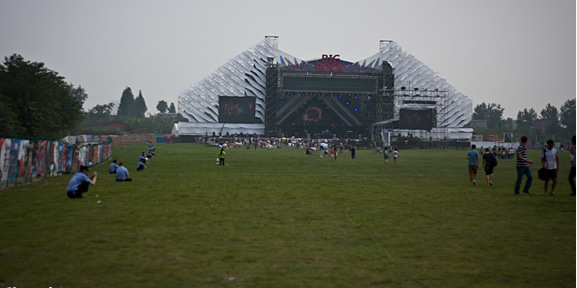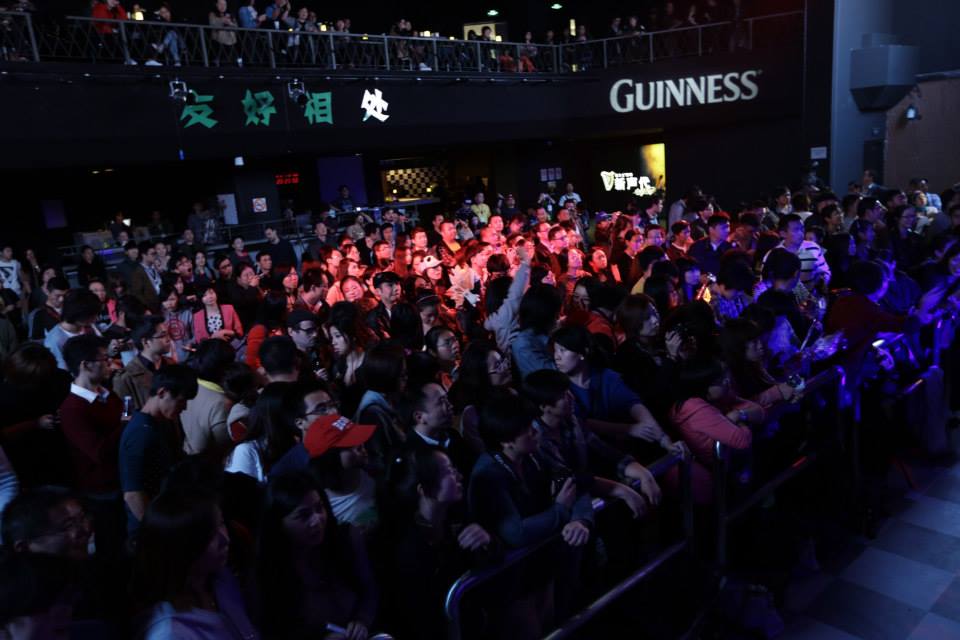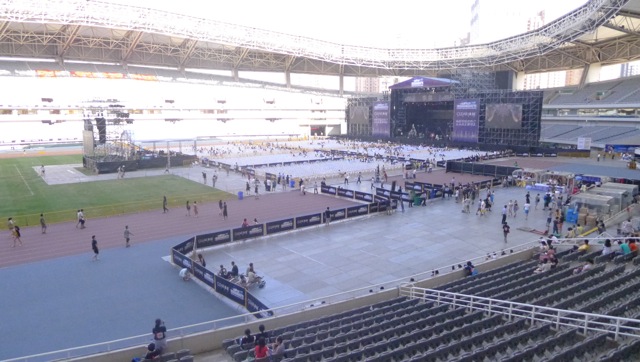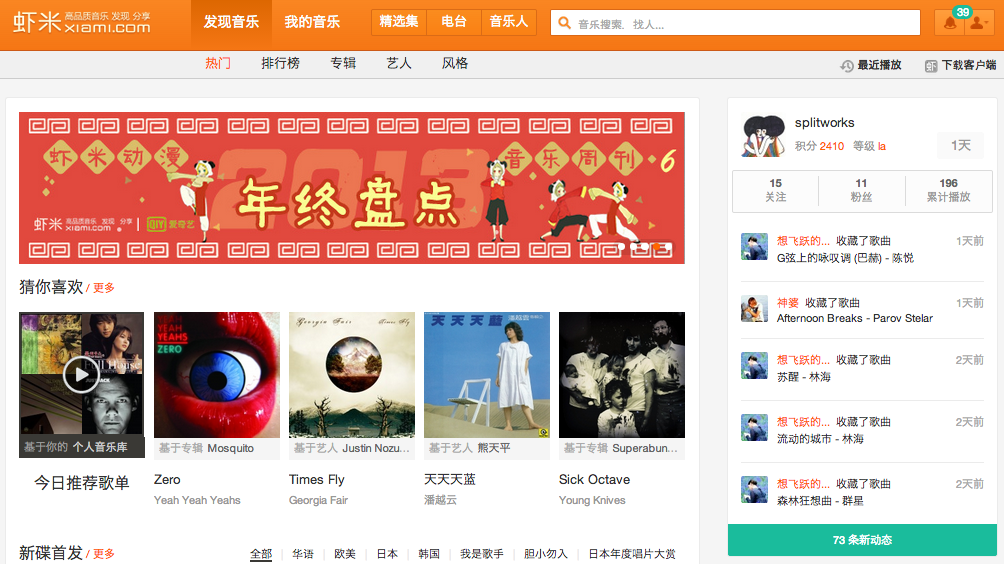On the surface, this was the biggest year since we started covering the Chinese music industry, way back in 2007. In 2013, venues were full to bursting (of shows, not audiences), from big city arenas down to slightly smaller (but still very big) dive bars. Festivals new and old, continued to take hold across the country, while new streaming services from Baidu, Tencent and the now Alibaba-owned Xiami became viable listening alternatives. China continued to build more and more infrastructure, while 2013 also saw a resurgence of industry conferences. It all seems like good progress, but are there any flies in the ointment?
We’ve made our position fairly clear over the last 12 months as to what we think of all the investment flowing into the music market. As with investment in all industry sectors in China, money rarely goes into the places where it is most needed. We have amazing and beautiful concert halls and theatres, but often a paucity of audience-drawing talent. This makes them (for the moment) big white elephants, hollow status symbols.
All the while, local tourist boards are spending big cash on bringing festivals to their cities. A tradition that began with Midi Zhengzhou in 2008 has spread across the country. We have seen festivals pop up all over China, with most of them paid for by their local governments. Some have worked well and become permanent fixtures (Zhangbei’s InMusic festival, Zhengzhou’s Midi / Strawberry, Hangzhou’s Xihu Festival, Jinshan Zebra Festival, Shanghai’s JZ Festival – actually, this exercise shows how few of the government funded festivals have actually developed to become real ongoing concerns), and some have been horrendously unsuccessful (Chengdu’s Big Love being the poster child of this category).

Then into the mix come the brands, who have long been involved in festivals as minor partners. 2013 saw the emergence of Carlsberg brand Tuborg as a serious player in music. Their dual strategy saw an extensive 56-city tour of Western China (handled by our sister company Splatter) and a series of brand-owned festivals (Greenfests) in partnership with Modern Sky. There were 2 Greenfests in 2013 (Yinchuan and Kunming) with 4 planned for 2014. The scale and duration of the investment is something that we’ve been advocating for quite some time and we are happy to see it finally happening. Guinness also got in on the act with their More Music platform. More Music is a holistic campaign that draws on the surge of folk and world music acts that have started-up across China. It includes everything from music editorial, online, mobile, and a series of branded shows which culminated in Guinness Wood+Wires festival (with more shows lined-up for 2014). You can read more about both campaigns in Splatter’s The SOUND newsletter.

Speaking of festivals, there is a fear that their ubiquity and scale (and price) are destroying the incredibly important but largely underrated arena of the livehouse. Put yourself in the shoes of a young Chinese music fan, a fan that earns relatively little (2,500 – 5,000 RMB / month in tier 1 cities), and then imagine that for 120RMB, you could go to Midi Shanghai and see 50 bands on 9 stages over the course of a single day. Why then, would you drop 60 or 80 RMB to see a band from Beijing supported by one or two other local bands? There is a very serious problem emerging here: livehouse shows are vital incubators of young bands, where they earn most of their money and where they build their fanbases. Festivals need to start pricing themselves at a more realistic level, so that when the government support inevitably disappears, they can continue to sustain themselves.
Public money is also being followed by private: VC backed companies are pushing for market share, but the big question here is, are financial organizations the best people to be driving the direction of our creative industries? Companies like LivePlanet and JUOOO at the top-end have now been joined by the likes of Modern Sky, trying to prove to investors that they are making progress, while all too often they are putting artists in empty venues in search of market share. Very often this ruins the viability and long term appeal of the artists to a Chinese fanbase. As we have said many times before, at this stage of the cycle, the promoters are moving too fast for the audience.
At the same time, big international players are smashing holes in their balance sheets with huge, high profile and expensive mistakes. We covered the summer debacles: Shanghai Sonic – the big first (mis)step for Japanese promoter Creativeman into the Chinese market; the Aerosmith cancellation (where Gold Typhoon attempted to get into the stadium game, booking Aerosmith into the 23,000 capacity Hongkou stadium only to cancel at the last minute), and many poor showings for Livenation (Pet Shop Boys, the Killers) along with some indifferent stuff for AEG in their Mixing Room (Coheed and Cambria, Tony Bennett, Herbie Hancock). In their defense, AEG had some pretty incredible success at the higher level – Metallica and Justin Bieber among them, but it isn’t necessarily bigger shows at higher prices that we need more of. We need better promoters at the middle level.

As recorded music continues to search for a way to monetize in China, it is encouraging to see Xiami, once villain-of-the-piece for charging advertisers while paying nothing to the creators, being purchased by Alibaba. Surely such a well known company will help to continue moving the service toward a legitimate and artist-friendly model. All the while, Baidu and QQ stepped into a void left by Google with ad-funded music services to compete with Xiami. While we cannot imagine any of these companies are going to make the creators rich any time soon, these are definitely steps in the right direction.
It seems once more that China is worthy of wider industry acclaim. Having seen a “surgence” of industry type events in the lead up the Olympics and again for the Expo, 2013 saw a resurgence of such. Sounds of the Xity celebrated year 3 with yet more provocative posters and a clutch of music showcases in the Gulou district of Beijing. Feedback was mostly positive, with some reasonably serious international players attending. November’s Dong Dong was organized in collaboration with French industry event MaMa, and received similar feedback. Finally, EARS hit Beijing and Shanghai in early December as a part of the re- (and ill-) conceived Modern Sky Festival. A little rougher around the edges than the other two, EARS took on a wider and longer agenda as well as hitting two cities. If China’s music industry is worthy of 3 annual events, then there must be something happening.
Shall we talk EDM? The globally manufactured moniker touched down in China, with many if not all of China’s clubs switching allegiance from the tried and tested hip-pop formula, to one of extravagantly formulaic house beats. 2013 also saw the launch of possibly the year’s most overt attempt to graft a foreign trend onto China, when Storm Music Festival hit Shanghai for 2 days in November. A reasonable number of expats and some of their expat friends showed up to the likes of Axwell, Benny Benassi and Afrika Bambaata. Production was immense, really a huge step up from previous festivals. The whole thing was pretty innovative conceptually for the market in question, but in terms of tickets sold, we wince to imagine how much money was lost. The festival did a good job of taking the club to the festival space, but the question is, if you can get it in a club, why would you want to go outside (in November) for something similar? The concept probably does have a future in China, but whether Storm’s investors have the ambition or resources to go as far as they need to be profitable is a very real question.
Finally, 2013 was the year that Chinese artists started to get some serious international recognition. Bands like Nova Heart, Hanggai and Song Yuzhe started (and continued) to play further and further up the bills at international festivals, featuring on the international touring and major media circuit. Long may the trend continue.
Predictions for the New Year and the near beyond:
- Big promoters will bring in even more high-priced entertainment. There will be some major casualties.
- The number of festivals will decrease, but the quality will go up.
- Mainstream brands will all go music. The more trend focused ones will look elsewhere.
- Livehouses and live shows will struggle
- The media that connects it all will become more important and developed – we might actually get some decent reporting.
- Mobile, of course, will drive demand.
That’s it from us. It’s never boring. We wish you all the very best in 2014 and beyond.
Let’s make things better 🙂
